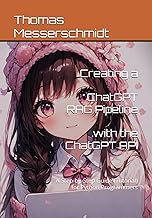Summary of "Complete RAG Crash Course With Langchain In 2 Hours"
Summary of “Complete RAG Crash Course With Langchain In 2 Hours”
Overview
This video is a comprehensive crash course on Retrieval-Augmented Generation (RAG) using Langchain. It covers theoretical concepts, practical implementation, and modular coding. The course guides learners from the basics to advanced RAG pipeline development, focusing on real-world use cases, especially in startups and companies.
Key Technological Concepts and Features
1. RAG Definition and Importance
- RAG optimizes Large Language Model (LLM) outputs by referencing an external authoritative knowledge base (vector database) outside the LLM’s training data.
- It addresses two main LLM disadvantages:
- Hallucination: LLMs generate plausible but incorrect answers when data is missing or outdated.
- Customization: Fine-tuning LLMs with proprietary data is expensive and impractical for frequently updated data.
- RAG allows cost-effective, domain-specific, and up-to-date responses without retraining.
2. RAG Pipeline Components
-
Data Injection Pipeline:
- Data ingestion from various formats (PDF, HTML, Excel, SQL, unstructured data).
- Data parsing and chunking (splitting large documents into smaller chunks respecting LLM context size limits).
- Embedding generation (converting text chunks into numerical vector representations using embedding models).
- Storage of embeddings in a vector database (vector store) for efficient similarity search.
-
Retrieval Pipeline:
- User query is embedded and searched against the vector store.
- Relevant context is retrieved based on similarity.
- Context and prompt instructions are fed to the LLM to generate accurate, context-aware output (augmentation + generation).
3. Document Data Structure
- Central to RAG is the document structure consisting of:
page_content: Actual text content.metadata: Additional info like source filename, author, page count, timestamps, etc.
- Metadata enables filtering and improves retrieval precision.
4. Data Parsing and Chunking
- Recursive character text splitter is used to chunk documents with overlap to maintain context.
- Chunking is essential due to LLMs’ fixed context window sizes.
5. Embedding Models
- Use of open-source models like Hugging Face’s
all-miniLM-L6-v2via Sentence Transformers for generating 384-dimensional embeddings. - Embeddings convert textual data into vectors for similarity computations.
6. Vector Stores
- Use of open-source vector databases such as ChromaDB and Faiss for storing and querying embeddings.
- Persistent storage of vector indexes and metadata for reuse and scalability.
7. RAG Retriever
- A modular retriever class that takes a query, converts it to embeddings, queries the vector store, and returns relevant documents with similarity scores.
- Helps reduce hallucination by grounding LLM responses in retrieved context.
8. LLM Integration and Augmented Generation
- Integration of LLMs (e.g., Grok API with Grock LLM) with retrieved context.
- Prompt engineering to instruct the LLM to answer queries based on retrieved context.
- Output is generated with improved accuracy and domain relevance.
9. Advanced RAG Pipelines
- Enhanced pipelines include:
- Confidence scores, source citations, partial/full context return.
- Streaming responses, history tracking, summarization.
- These features improve user experience and reliability.
10. Modular Coding and Project Structure
- Transition from Jupyter notebooks to modular Python code.
- Creation of separate modules/files for:
data_loader.py: Loading and parsing multiple file formats into document structures.embedding.py: Chunking and embedding documents.vector_store.py: Managing vector database operations (build, save, load, search).search.py: Querying vector store and integrating with LLM for answer generation.
- Use of environment variables for API keys and configuration.
- Emphasis on reusability, maintainability, and scalability.
11. Practical Demonstrations
- Loading PDFs and text files using Langchain loaders (
PyMuPDF,TextLoader). - Parsing documents, chunking, embedding, and storing in vector DB.
- Querying the vector DB and generating LLM responses.
- Saving and loading vector store indexes for persistent use.
- Running the entire RAG pipeline in a Python app with Langchain and Grock LLM.
12. Assignments and Encouragement
- Viewers encouraged to try loading other file types (CSV, JSON, SQL).
- Suggested to explore Langchain’s extensive document loaders and embedding options.
- Encouraged to understand document structure and chunking strategies deeply.
Tutorials / Guides Provided
- Understanding RAG Concept and Pipeline
- Data Injection Pipeline:
- Document loading from multiple formats.
- Document structure and metadata handling.
- Chunking strategies with recursive text splitter.
- Generating embeddings with sentence transformers.
- Storing embeddings in vector stores (ChromaDB, Faiss).
- Retrieval Pipeline:
- Query embedding and similarity search.
- Retrieving context documents with metadata and similarity scores.
- Prompt engineering for context-aware LLM output.
- Building Modular RAG Pipelines:
- Creating classes for embedding manager, vector store, and retriever.
- Structuring code in modular files for scalability.
- LLM Integration:
- Using Grock LLM API for answer generation.
- Setting environment variables and API keys.
- Advanced RAG Features:
- Confidence scoring, source citation, summarization, streaming.
- Practical coding demos in Jupyter and Python scripts.
Main Speakers / Sources
- Krishna Nayak — Primary speaker and instructor delivering the entire crash course, explaining concepts, coding, and practical implementations.
Summary
This video is an end-to-end tutorial and guide on building efficient RAG systems using Langchain, embedding models, vector stores, and LLMs. It emphasizes practical coding, modular design, and real-world applications.
Category
Technology
Share this summary
Featured Products

LangChain Crash Course: Build OpenAI LLM powered Apps: Fast track to building OpenAI LLM powered Apps using Python

Creating a ChatGPT RAG Pipeline with the ChatGPT API: A Step-by-Step Guide (Tutorial) for Python Programmers

Learning Deep Learning: Theory and Practice of Neural Networks, Computer Vision, Natural Language Processing, and Transformers Using TensorFlow

Vector Powered AI with Python: Use LLMs and Vector Databases to Create Smart, Scalable, and Context-Aware Software